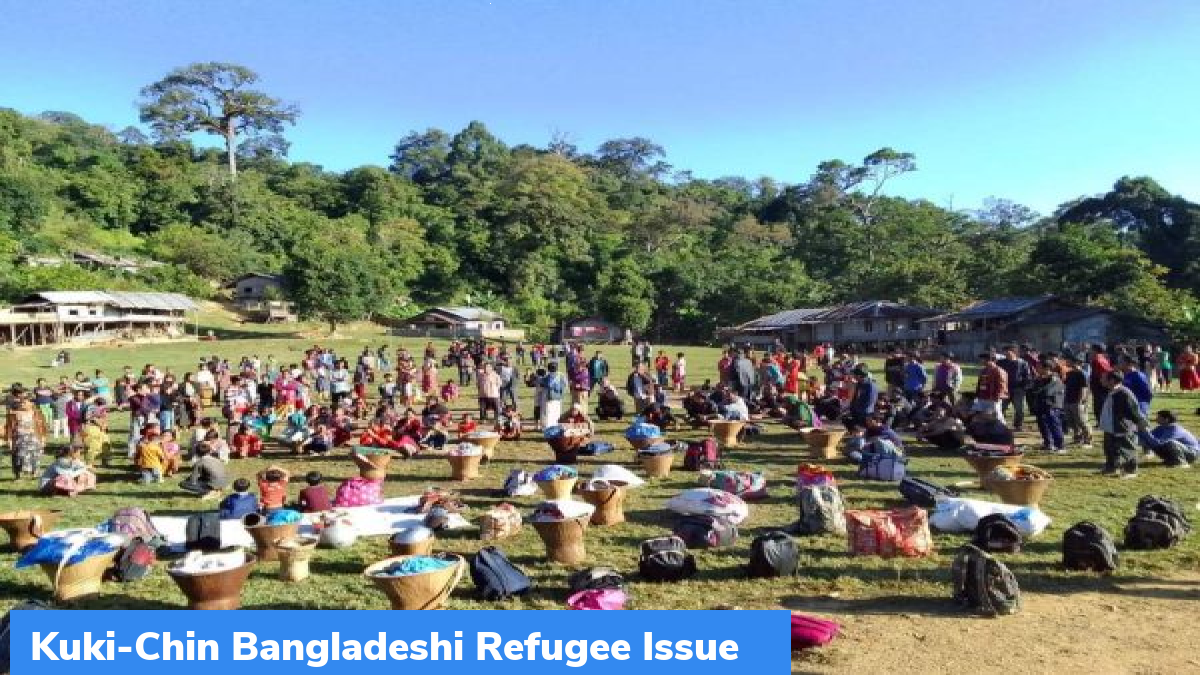Kuki-Chin Bangladeshi Refugee Issue
The on-going conflict between Bangladeshi security forces and the Kuki-Chin National Army (KNA) triggered an influx of refugees from the Kuki-Chin community to the Indian state of Mizoram.
Who is Kuki-Chin National Army (KNA)?
- The Kuki-Chin National Army (KNA) is the armed wing of the Kuki-Chin National Front (KNF) – a separatist group that was established in 2008 to create a separate state in Chittagong Hill Tracts (CHT) in Southern Bangladesh.
- The KNF claims that all members of the Bawm, Pungkhua, Lushai, Khumi, Mro, and Khyang ethnic groups are part of the greater Kuki-Chin race.
- Also known as the Bawm Party, this group is having close relationships with rebel groups in Northeast India and Myanmar.
About the current conflict in Bangladesh
The Rapid Action Battalion (RAB) has launched an operation in October 2022 against the Kuki-Chin National Army (KNA) after it entered into an agreement with the newly formed militant outfit called the Jama’atul Ansar Fil Hindal Sharqiya, which originated from the remote hilly terrains of Rangamati and Bandarban. Under this three-year agreement, KNF will provide shelter, training and other support to the militants in return for 3 lakh Bangladeshi Taka and food expenditure. While several of them have been arrested, 50 militants are currently being trained in the region.
Refugee Situation in Mizoram
This on-going military operation in the CHT has triggered the inflow of refugees in Mizoram. At least 200 Kuki-Chin refugees from Chittagong reached Mizoram’s Lawngtlai district.
The state cabinet had recently approved the setting up of temporary shelters and other basic amenities the Bangladeshi Kuki-Chin refugees. Some 35 lakh people of Kuki-Chin-Mizo communities live in Chittagong Hills Tracts. More refugees from this region are expected to reach Mizoram. They will be recognized as “officially displaced persons” in the state government records since there are no laws related to refugees in India. These refugees will be housed on the same lines as the shelters given to the refugees from Myanmar, who entered Mizoram after the 2021 coup. Mizoram, which shares a 318-km-long border with Bangladesh, currently hosts some 30,000 refugees from Myanmar.
Month: Current Affairs – November, 2022
Category: India Nation & States Current Affairs • International / World Current Affairs


